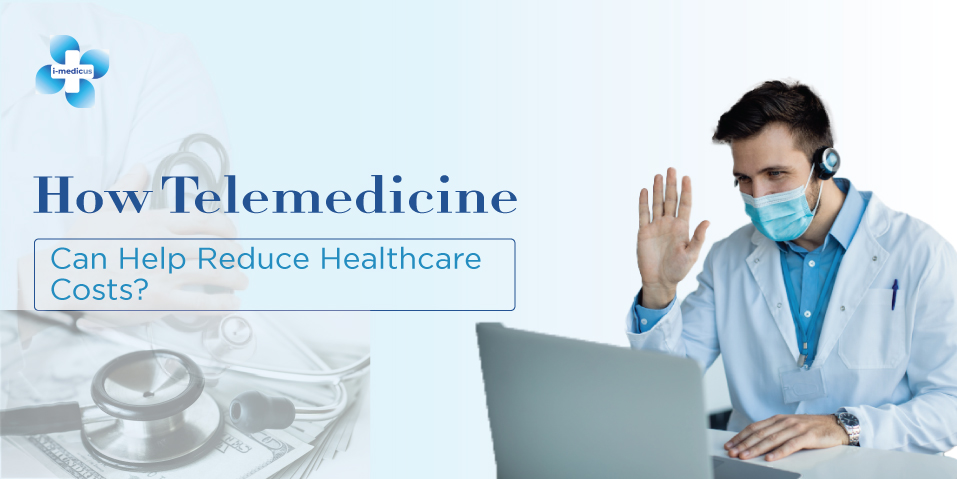Our access to healthcare has been evolving since the arrival of telemedicine. Using technology to get help from home rather than visiting a doctor in person is now possible. Patients can get the care they need from professionals by simply using computers, tablets, and smartphones. Everyone can more easily access healthcare thanks to Telemedicine healthcare services, especially those far from clinics or hospitals. Long-distance travel and crammed waiting rooms are things of the past. This saves money on travel and other expenses in addition to saving time.
Telemedicine also makes it possible for patients and physicians to communicate virtually, which improves patient health management. A few advantages include simple access to medical counsel, prompt consultations, and routine check-ups. In this blog, we’ll help you explore how telemedicine is making a big impact on healthcare and what new trends are shaping its future.
What is Telemedicine?
As per the definition, telemedicine refers to the practice of providing medical services without visiting the practitioners in person. In the early stages, telemedicine became a useful resource, especially during the COVID-19 pandemic, as people sought visual help. Since then, Telehealth Services for Patients started a new approach of consulting with their physicians without coming to the clinics. Instead of going to see a doctor at his office or a hospital, you could talk with a doctor online. Since this type of care was so helpful, it continued to grow and ended up as a model of medical treatment for a vast population.
Why is Telemedicine Important?
Many factors contribute to how telemedicine is important in modern care
1. Remote Access
Telemedicine initiates the chance to obtain healthcare services without leaving the comfort of home. All you need is a device that can connect to the internet and have a camera for video consultation. It also means that you do not have to visit the clinic for an appointment. However, it is possible to have what is called a tele-audit, where you and the doctor discuss things via a video connection. Such remote access will prove most beneficial to people who live in areas that are considered rural or those who are located in the rural hinterlands and may have to travel long distances to get to a medical facility.
2. Virtual Appointments
Telemedicine healthcare means that you can participate in medical consultations virtually. Basically, a user gets a platform with a video conferencing facility to have a discussion with their doctor. It is, of course, convenient and saves a lot of time. There is no need to be conscious about the time that is used to attend the clinic, be it the time spent in the waiting room or that wasted in traffic. Having virtual appointments also does not interrupt the daily schedule; as a result, people can visit health facilities frequently and have their health checked frequently.
3. Safety During the Pandemic
In the period of COVID-19, telemedicine was identified as a necessary means. It lets people pursue work from home while continuing to get the necessary medical care without exposing themselves to the virus. Telemedicine also ensured that there was no overcrowding of the medical facilities and shielded patients and healthcare workers from risks that may be associated with infections. That is why its applicability in the context of the pandemic demonstrated to what extent it is possible to ensure convenient and effective healthcare delivery.
4. Convenience
Among all the benefits of telemedicine, the most significant is convenience or easy access to some services. It means that you can participate in a face-to-face conversation with your physician, avoiding time-wasting travel. It is a great advantage to persons with disabilities, working people, or people who reside in areas distant from healthcare facilities. Thanks to telemedicine applications, people do not have to worry about going to a hospital and can schedule appointments at home.
5. Cost-Effective
Telemedicine can also be cheaper, especially with the current advancement in technology, where the use of technology in practice means a cut down on cost. Patients are saved on the expenses of transport to the doctors’ facilities, like fuel, parking fees or fares for public transport. Thus, the frequency of sick days and the necessity of arranging for childcare during doctor’s appointments will decrease. To a healthcare provider, telemedicine reduces expenditures through the use of limited space and personnel compared to a compound with many rooms and many employees. This cost-effectiveness gives each of the units or offices, or even individuals involved, a win-win situation.
6. Access to Specialists
At times, you require the telehealth services of a specialist for health complications. Hence, telemedicine provides an opportunity to consult with personnel who may not be easily accessible in your area. It is often difficult for a frustrated patient struggling with his disease to wait for months to see a specialist or travel long distances. Yet, they can have an online session with a specialist and get expert advice and treatment. With this access, patients are assured of enhanced quality of treatment, hence quality healthcare, since they can be easily referred to specialists depending on their ailment.
7. Chronic Disease Management
People with chronic conditions such as diabetes, high blood pressure, or asthma find it easier to get medical help at home. It is very hard to visit doctors frequently and for routine check-ups, so patients prefer video consultations for their chronic diseases. Sessions via telemedicine mean that the doctor can keep a closer eye on a patient’s condition and modify the treatment as necessary. Telehealth solutions can include monitoring the status and changes in the patient’s central signs and other parameters, thereby reducing the risk of negative outcomes in their condition and ensuring that all aspects of their disease are controlled.
8. Enhanced Patient Engagement
Such programs may have options that assist you in maintaining interaction with your medical providers. These might include applications that can enable the patient to set an appointment, be reminded of the dosages of the medicine, and even access their health records. Luckily, the ability to take health care management into your own hands and have better control over the further treatment plan makes you keep up with your body’s state and with all the doctor’s suggestions.
9. Integration with Wearables
Smartwatches or other fitness trackers can, for instance, be combined with telemedicine to get accurate information about the patient’s health. Some of these include items such as rate of heartbeat, physical movement, and blood glucose level, and feed this information to the doctor. This type of data is useful to doctors as it is continuous and gives a vivid image of a patient’s general health condition.
10. Expanding Services
Telemedicine is constantly evolving. Modern technologies and advances are increasing the spectrum of services provided. For instance, in the medical field, AI is being applied in the identification of conditions and or suggestion of appropriate treatments. Future prospects of modern technology also include remote surgery and additional treatments, which means that specific operations may be conducted remotely. These improvements will continue to build up the options of telemedicine and add more healthcare techniques.
Looking for Telemedicine app to extend your reach?
i-medicus your ultimate Telemedicine partner
What’s Next for Telemedicine?
AI and Machine Learning
As for future developments, more applications of artificial intelligence and machine learning could be the directions to explore for telemedicine. AI in telehealth app may have the capacity to diagnose diseases and prescribe courses of treatment from data, which will increase the efficiency of telemedicine even more.
Advanced Operations and Tele-Surgery
Telemedicine trends may also extend to remote operations and other forms of intricate procedures. Probably, with advancements in technology, these services can be offered from a distance, hence increasing access to surgery services by doctors.
Expanding Services
It is expected that the use of technology in patient care will continue to develop and fulfil a variety of requirements. In the future, it could help in various medical care services that have been limited in recent times for certain reasons. It can also be useful in some therapies with more specialized new approaches. As a result, it will provide the perfect treatment for particular disorders.
Conclusion
Telemedicine is transforming healthcare for patients. Using telemedicine platforms, users can receive care from home via their personal computers and cell phones. Therefore, it makes healthcare delivery through the telehealth platform more accessible for individuals who live far from medical facilities. Moreover, it also reduces the time and cost of travel. During the COVID-19 pandemic, telemedicine proved critical for providing safe care. Telemedicine will expand to include even more complex services, including remote procedures and AI-driven care, thereby improving the entire patient experience and accessibility.
FAQs
1. What is telemedicine?
Telemedicine lets you see a doctor online using your computer or smartphone.
2. How does telemedicine help patients?
It saves you time and travel costs by letting you have doctor visits from home.
3. Is telemedicine safe?
Yes, it uses secure technology to keep your health information private.
4. Can I use telemedicine for everything?
Not always; it’s best for consultations that don’t need physical exams or tests.
5. How do I start with telemedicine?
Download the app or use the platform your doctor recommends, then join your online appointment.








